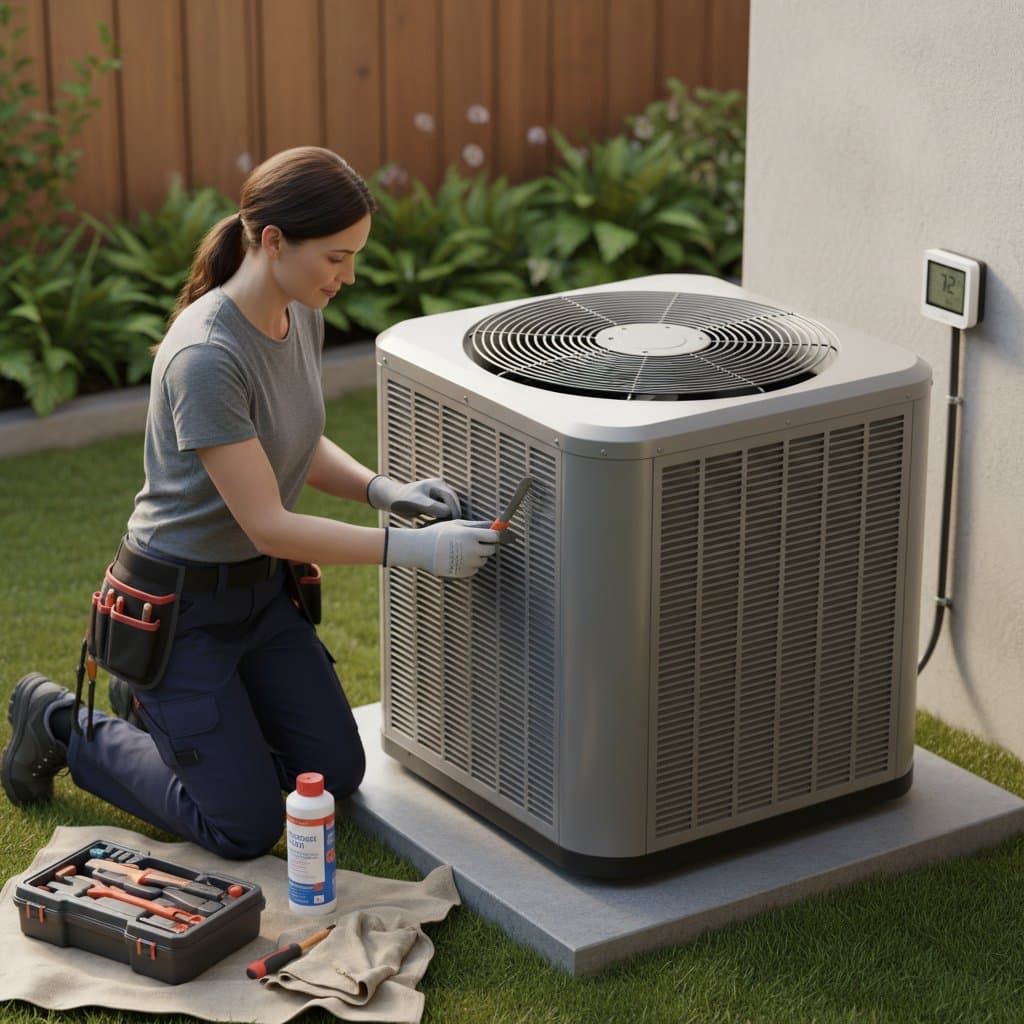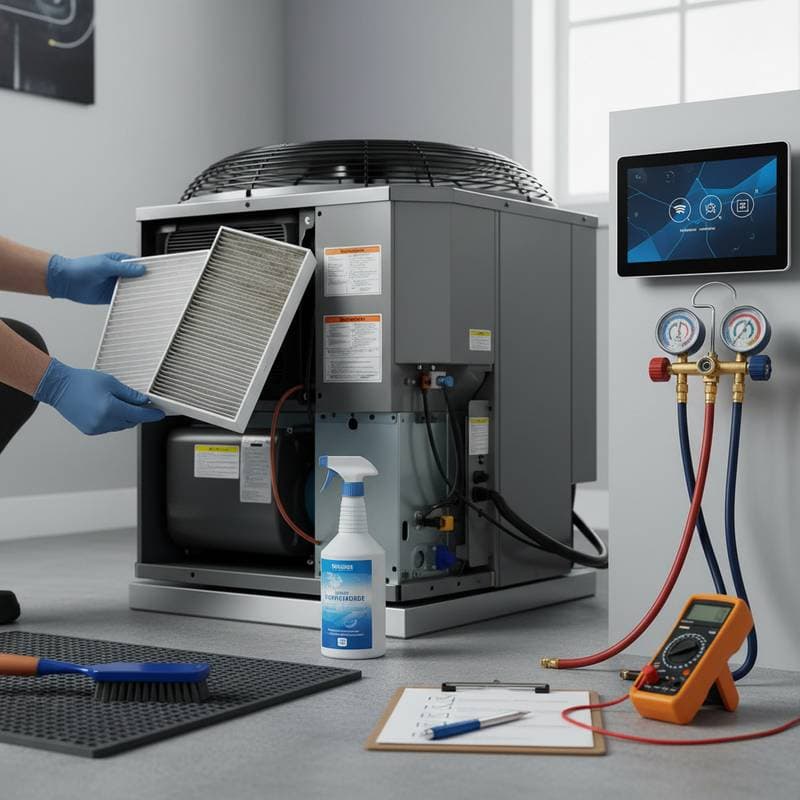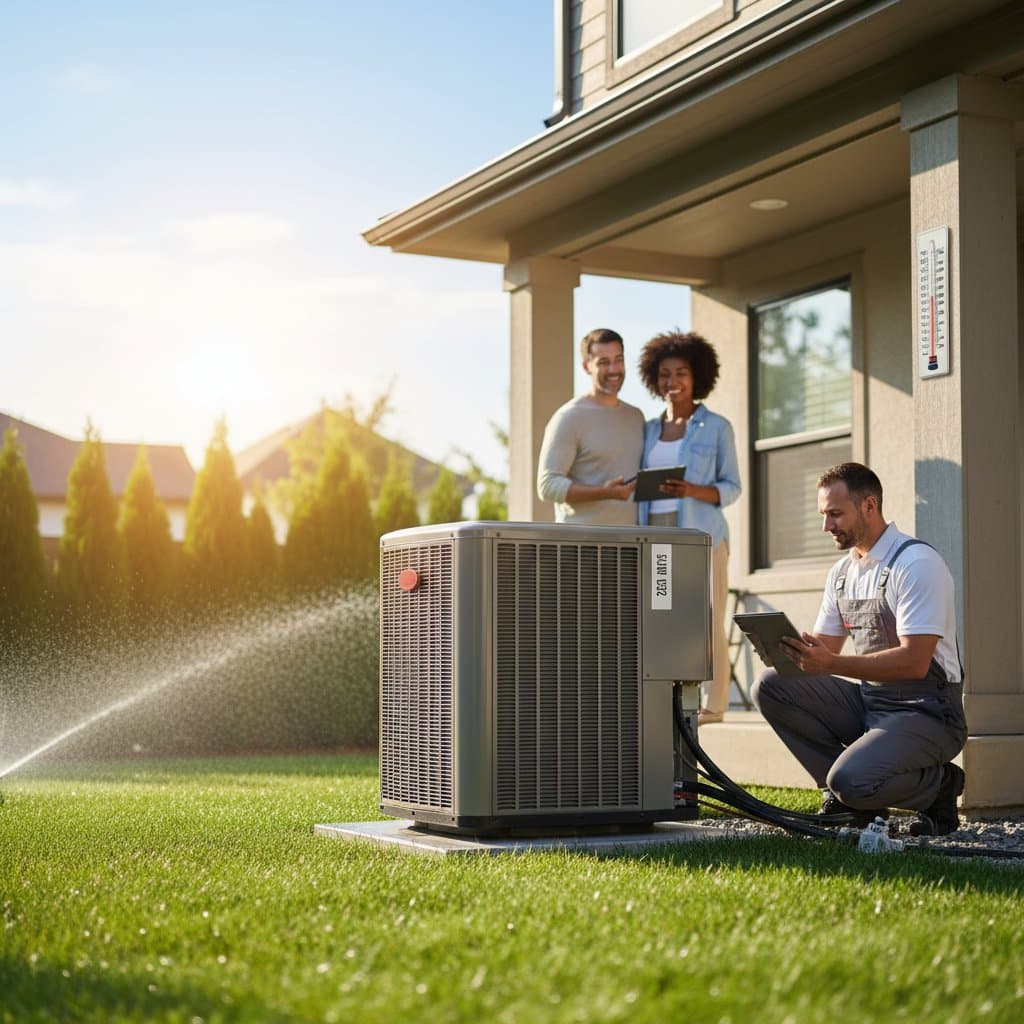Prepare for Peak Performance: Key AC Maintenance Steps for Summer
Summer heat places significant demands on home air conditioning systems. A properly maintained unit operates at optimal efficiency, avoiding the 20 percent performance drop that often occurs with neglected equipment. Early preparation ensures reliable cooling, lower energy consumption, and reduced risk of failure during extreme temperatures. This guide provides a structured approach to essential checks, enabling homeowners to safeguard their systems effectively.
Step 1: Examine and Replace Air Filters
Air filters capture dust and allergens, but accumulated debris impedes airflow and strains the system. Restricted circulation increases energy demands and leads to inconsistent temperatures throughout the home. Manufacturers advise replacement every one to three months, with more frequent intervals in high-dust or pet-heavy households.
Perform the replacement as follows:
- Power down the unit via the thermostat.
- Remove the filter and assess its condition for excessive dirt.
- Install a new filter matching the original dimensions and MERV rating if light struggles to pass through the old one.
- Note the installation date on the frame for future reference.
Fresh filters enhance efficiency by as much as 15 percent and protect components like the blower motor from premature wear. Regular attention here forms the foundation of overall system health.
Step 2: Clean the Outdoor Condenser Unit
The outdoor condenser expels heat from the refrigerant, but exposure to elements like leaves and pollen obstructs this process. Blocked coils force the compressor to overwork, elevating operating costs and shortening equipment life. Annual cleaning restores proper heat dissipation and supports consistent performance.
Conduct the inspection and cleaning with these actions:
- Disconnect power at the breaker or service panel.
- Remove vegetation and debris, ensuring at least two feet of clearance around the unit.
- Gently brush or vacuum dirt from the coil fins.
- Use a fin comb to realign any bent sections for unobstructed airflow.
Avoid high-pressure water, as it risks damaging the fins. For severe buildup, professional service ensures thorough results without compromising integrity. This step alone can significantly lower system strain during hot weather.
Step 3: Review Wiring and Electrical Components
Electrical issues, such as loose connections or corrosion, pose risks of intermittent operation or complete shutdowns. Overheated wires may also trigger safety concerns like short circuits. A visual inspection identifies potential problems before they escalate.
Inspect safely by:
- Shutting off all power to the unit.
- Examining terminals, control boards, and wiring for signs of damage, including fraying or discoloration.
- Tightening any loose connections if comfortable doing so.
Professional technicians handle voltage testing and part replacements, such as capacitors, to prevent compressor overload. Addressing these elements early averts major disruptions and enhances safety.
Step 4: Clear Drain Lines and Pans
Condensate from dehumidification flows through drain lines, but clogs from algae or sediment cause overflows and potential water damage. Stagnant moisture fosters mold, affecting indoor air quality. Preventive measures keep drainage functioning smoothly.
Maintain the system through:
- Identifying the drain line at the indoor evaporator coil.
- Flushing with a vinegar or diluted bleach solution quarterly to inhibit growth.
- Verifying the drain pan remains free of pooled water; use a wet vacuum for blockages.
Routine flushing preserves efficiency and prevents leaks that could harm flooring or walls. This maintenance supports a healthier home environment year-round.
Step 5: Assess Home Insulation and Seals
Even the best AC unit underperforms if cool air escapes through gaps or inadequate insulation. Drafts around doors and windows compel the system to cycle more frequently, driving up bills. Sealing and insulating upgrades provide substantial returns on minimal investment.
Evaluate and improve by:
- Checking weatherstripping and caulking for deterioration.
- Applying fresh seals to vulnerable areas.
- Inspecting attic insulation levels and adding material if needed to retain conditioned air.
Effective barriers can cut cooling expenses by up to 25 percent. These enhancements complement AC efforts, promoting even temperatures and greater comfort.
Planning Maintenance Costs Effectively
Homeowners face varying expenses for AC upkeep, from basic DIY efforts to comprehensive professional evaluations. Filter replacements and simple cleanings require little outlay, yet they forestall repairs that could exceed thousands for items like compressors. Professional tune-ups, often priced accessibly, include diagnostics that uncover hidden issues.
Distribute tasks over time to ease budgeting: begin with filters and outdoor clearing in spring, followed by electrical and drain checks. Such strategy maintains readiness without financial strain, ensuring the system endures multiple seasons.
Advanced Strategies for Optimal Operation
Document all maintenance activities, including dates and observations, to monitor trends in performance and energy use. Position shade elements near the condenser to mitigate direct sunlight, while preserving airflow. Integrate ceiling fans to circulate air, permitting higher thermostat settings without sacrificing comfort.
Test the full system with a brief run cycle prior to intense heat periods, allowing ample time for adjustments. Consistent application of these practices sustains efficiency and reliability, transforming routine care into long-term savings.
Extend System Longevity Through Vigilance
Investing time in AC maintenance yields enduring benefits, from uninterrupted cooling to preserved equipment value. Proactive steps not only counteract efficiency declines but also enhance home safety and air quality. Commit to this regimen for summers defined by comfort rather than crisis.





